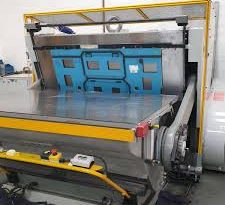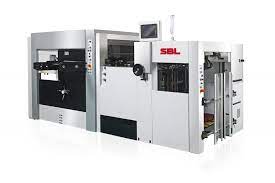Revolutionizing Production with High-Precision Die-Cutting Machines
Introduction: Die-cutting machines have transformed the landscape of manufacturing by providing an efficient, precise method to produce a wide array of parts and products. These machines are pivotal in industries where the shape and dimensions of materials directly influence the final product’s functionality and aesthetics. This article discusses the capabilities and advantages of die-cutting machines, highlighting their role in modern manufacturing.
What is a Die-Cutting Machine? Die-cutting machines are sophisticated devices that use steel dies to cut, shape, or perforate materials in specific forms. These machines are highly versatile, accommodating a variety of materials from paper and cardboard to metal and rubber. By implementing sharp, shaped dies, they perform cuts with high accuracy and repeatability, which is essential for quality control in mass production.
Operational Advantages:
- Complex Cuts Made Simple: Die-cutting machines handle intricate designs and complex cuts with ease, which might be challenging and time-consuming to accomplish manually.
- Scalable Production: These machines support scalable production efforts, capable of increasing output without sacrificing the quality of the components.
- Automated Efficiency: Many die-cutting machines are automated, reducing the need for manual intervention and streamlining the production process.
- Material Diversity: They can work with a range of material thicknesses and types, providing solutions for various industry needs.
Benefits of Die-Cutting Machines:
- Precision and Accuracy: Ensure parts are consistently produced to precise specifications, crucial for assemblies requiring tight tolerances.
- Increased Productivity: High-speed cutting capabilities allow for greater volumes of production in shorter periods.
- Reduced Operational Costs: By minimizing material waste and optimizing labor, die-cutting machines offer substantial cost savings over traditional cutting methods.
- Enhanced Flexibility: Quick die changes and setup adjustments allow for easy shifts between different production runs.
Industrial Applications:
- Consumer Products: Ideal for creating packaging, toys, and household items that require uniformity in design and construction.
- Medical Devices: Used for producing medical-grade components, where precision and sterility are paramount.
- Construction Materials: Capable of cutting materials used in construction, such as insulation boards and flooring elements.
- Stationery and Art: Provides precise cuts for stationery, invitations, and decorative items, enhancing product appeal.
Conclusion: Die-cutting machines significantly contribute to the efficiency and quality of manufacturing processes across a broad spectrum of industries. Their ability to deliver precise cuts, coupled with high operational speeds, makes them an essential component of any modern production line seeking to maintain competitive advantages in a global market. As manufacturers continue to seek ways to enhance efficiency and reduce costs, the strategic importance of investing in advanced die-cutting technology becomes ever more clear.



